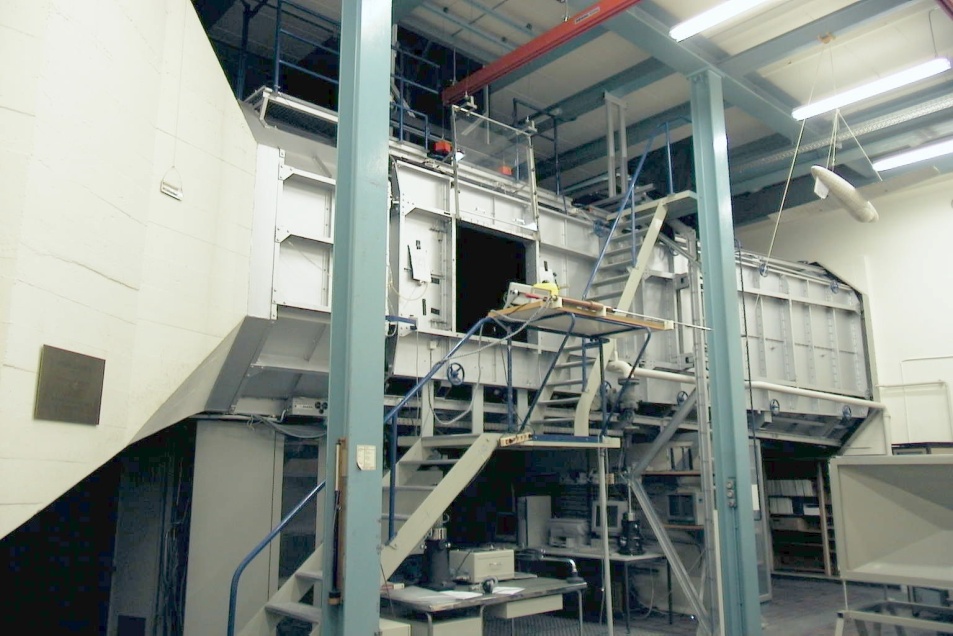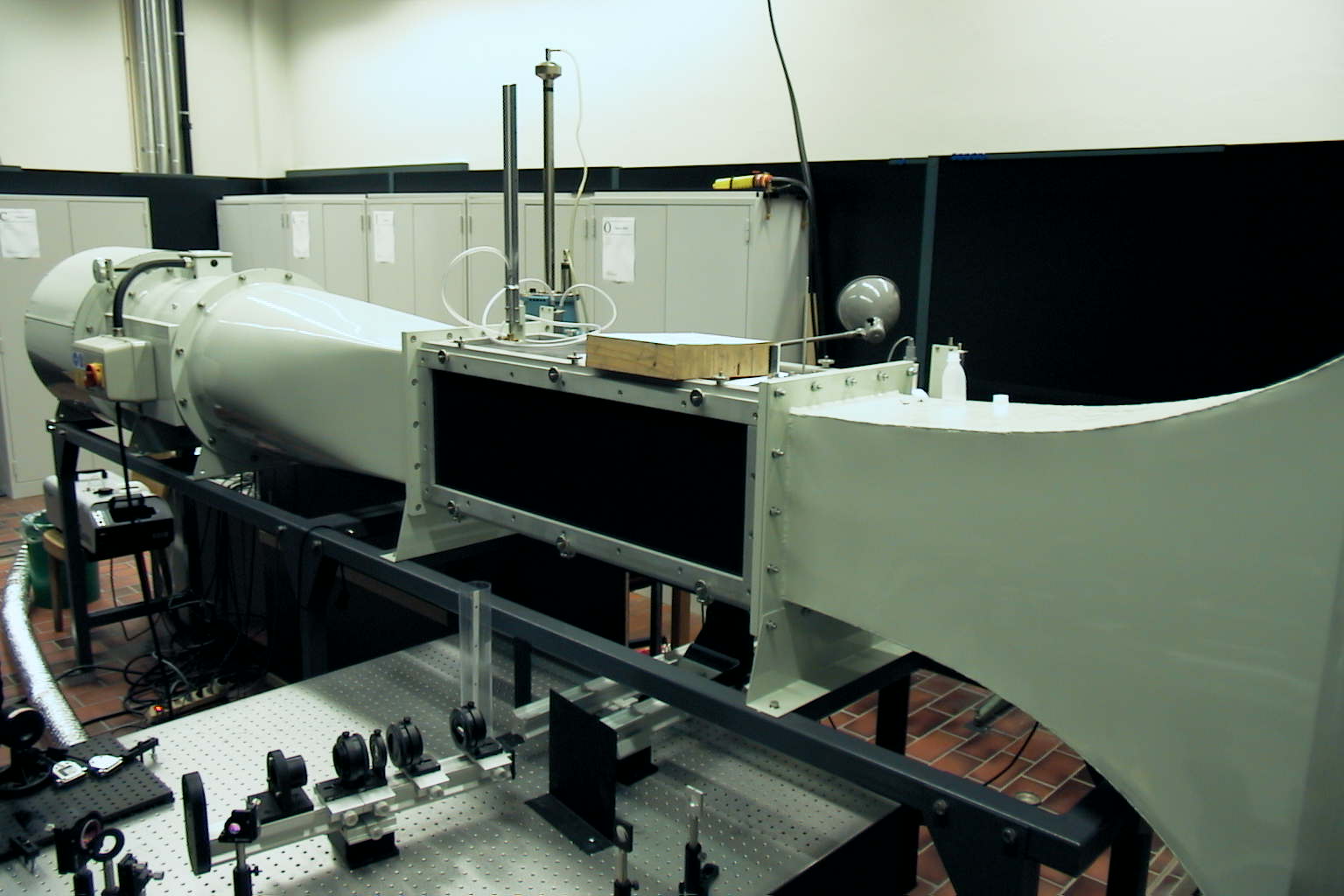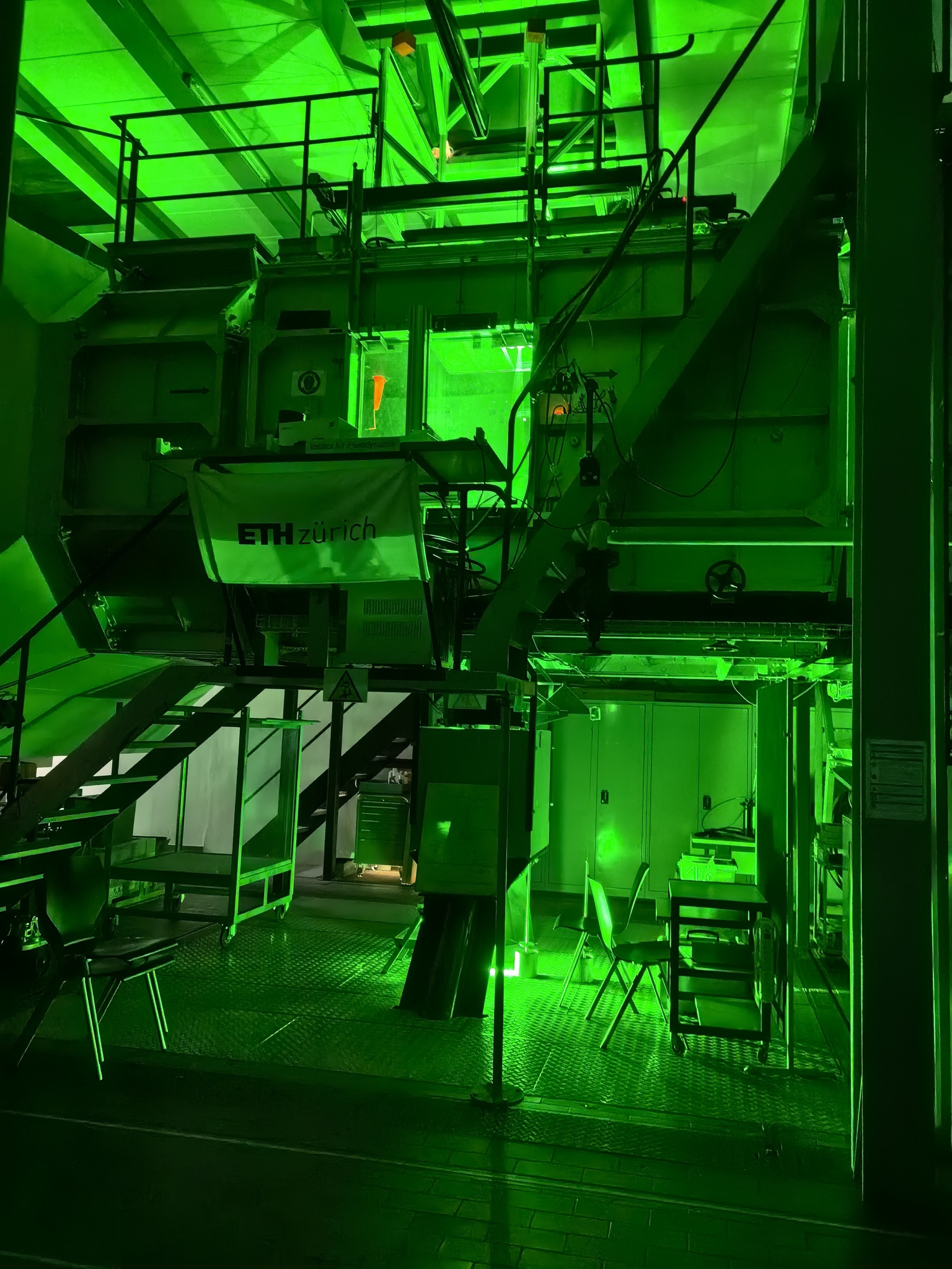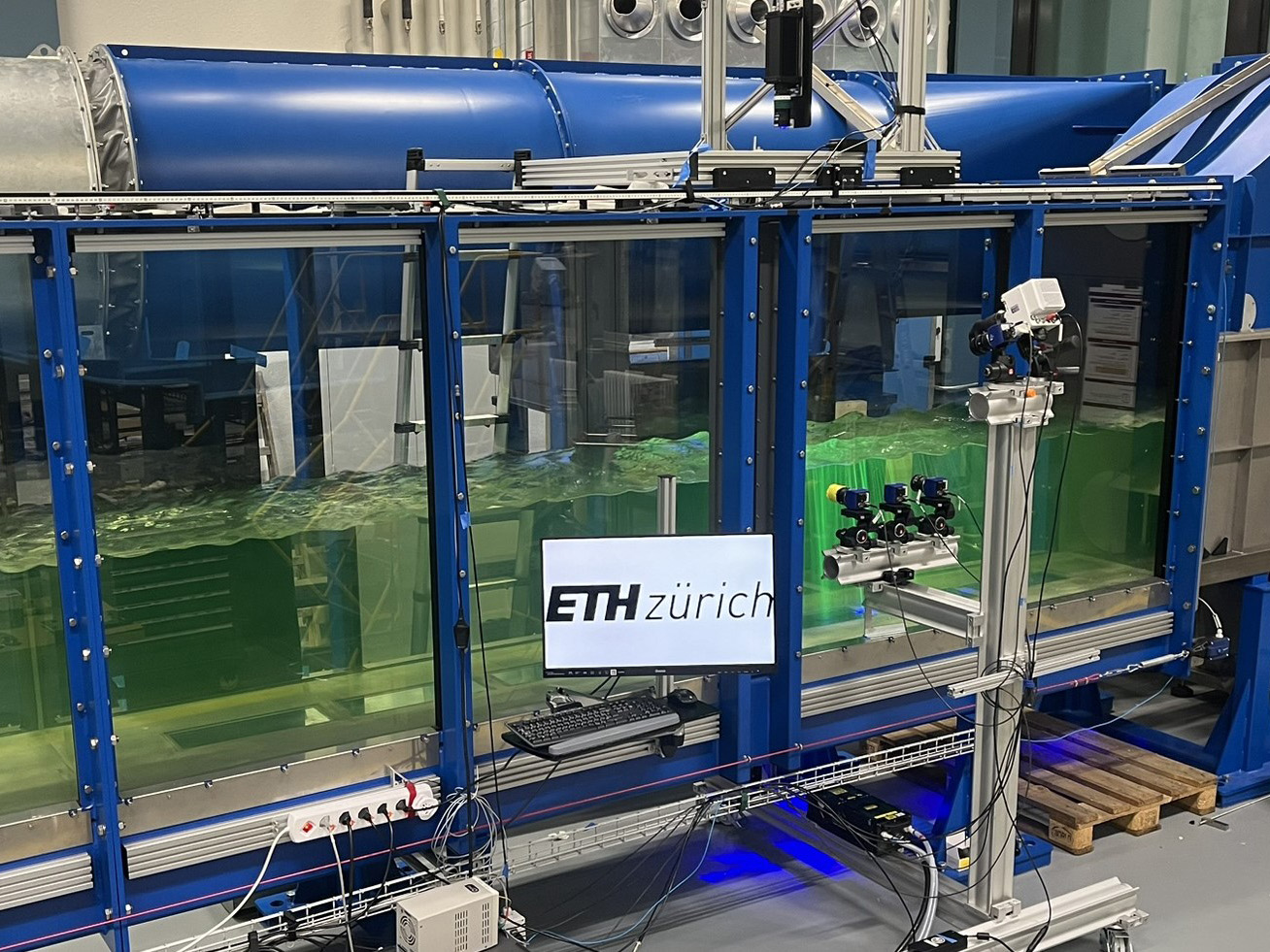Facilities
The Experimental Fluid Dynamics research group at ETH Zurich features large-scale fluid dynamics facilities.

The large flow visualisation water channel operated at ETH Zurich is a recirculating open channel manufactured by Engineering Laboratory Design Inc. in 2003. It has a 215 cm x 45 cm x 50 cm (L x W x H) plexiglass test section allowing convenient access for flow observations and imaging. The flow is controlled via a variable speed motor which regulates the rotational speed of an 11-kW single stage, axial flow, propeller pump. The water channel is designed to operate at flow velocities up to approximately 1.00 m/s. Before the test section, the flow enters an inlet plenum and is conditioned via a honeycomb section, followed by a series of stainless-steel flow conditioning screens and a 6:1 area ratio contraction. The return plenum contains a turning vane system which divides and directs the flow leaving the test section.
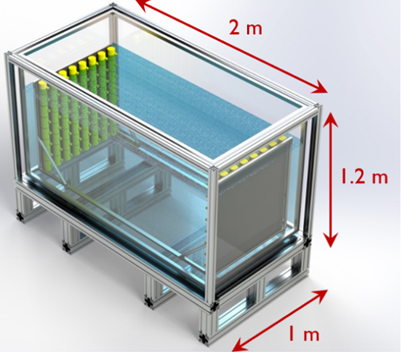
Our water turbulence chamber consists of a 2x1x1m (WxHxD) “aquarium”. It hosts 64 pumps on each of the long sides in an 8x8 array, which are activated using a random distribution. All are directed into the central plane, providing us with a zero-mean, turbulent flow in the central region of the tank. We can vary the turbulent Reynolds number between 250 and 600, with the relevant root-mean-square velocities spanning between 0.02m/s and 0.11m/s. It is used for various measurements, currently we are investigating settling fibers, large particles, rising bubbles and surface turbulence behaviour.
